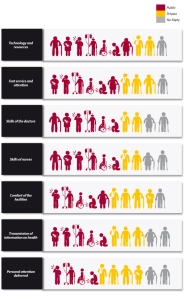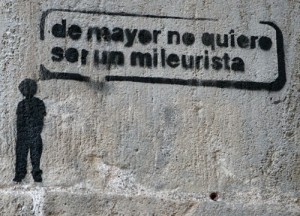For our postcard assignment, I chose to purchase one depicting one of my favorite locations on campus: Sylvan Grove. (The postcard included several smaller images so I chose to focus on this scene, image above.)
I visited Sylvan Grove at midday on a Thursday afternoon, and the weather was decent for Seattle — it wasn’t raining, at least. However it also wasn’t sunny, so this is the first obvious difference I noted on the back of this postcard. The image on the postcard shows the four columns surrounded by sunlight and green grass, and the whole scene looks very idyllic. In reality, the Grove is more often cast in shadows. Furthermore, the image makes it look like this place is untouched and rarely visited, which is relatively true, but on an average day there’s at least two or three other people enjoying the quietude, and when it’s sunny I regularly see groups of people enjoying a picnic or a game of frisbee. Even when there aren’t lots of people in this area, it’s easy to still hear the hustle and bustle of campus, whether it be cars and buses driving by on Stevens Way or people walking to and from class in the EE building and up and down Rainier Vista. In capturing the columns at their finest, in the light of the sun and without people surrounding them, the postcard paints a bit of a false image for visitors of UW.
This is probably true of most all postcards, guidebooks, and the like — they choose to show the scene or location when it’s looking its best. It makes sense, but this is very important to keep in mind when we’re traveling abroad and might have some preconceived ideas of what the cities and monuments we’re visiting should look like. This assignment emphasized to me the importance of keeping an open mind.



